Whaddya know, it’s Friday again! And here’s our regular roundup of recent news about cities, transport and making Auckland a little bit greater. This week’s header image shows an idea for High St, featuring bollards at the Shortland St entrance. See related item below.
This Week in Greater Auckland
It’s been a quiet week at our end, due to various winter lergies doing the rounds. We’re also experiencing some glitches with our mailouts to social media and to our subscribers – please contact us if you have any issues. Thank you for your patience while we sort this out!
- On Tuesday, we had a guest post from our sempai Darren Davis on extending Te Huia intercity rail to Tauranga.
- And on Thursday, Matt took a close look at how rapid our rapid transit actually is.
And, in case you missed it, last week Patrick Reynolds made an appearance on The Hoon with Bernard Hickey and Peter Bale (that link takes you right to the part with Patrick in, at about 39 minutes in).
This roundup, like all our work, is brought to you by the Greater Auckland crew and made possible by generous donations from our readers and fans. If you’d like to support our work, you can join our circle of supporters here, or support us on Substack!
Great news for fans of good process: transparency for AT’s TCC
Auckland Transport has finally made the meeting agendas and minutes of its Traffic Control Committee (TCC) available to search online.
The TCC makes “resolutions” about our streets and roads, and their meeting agendas and minutes are supposed to be publicly available. Auckland Transport’s interpretation of “publicly available” has been that they’ll provide a copy of a document to someone if they ask for it directly. But very few people have even been aware these documents exist – they’re not in the public domain, and the meetings aren’t open to the public.
Thanks go to Heidi O’Callahan for many years of tenacious advocacy to AT, asking them to put the documents online like other councils do. And credit to AT for doing so at long last, and creating a handy search tool as well.
You can now click here to search Traffic Control Resolutions for Auckland. AT is looking to add other links to this page in future, and welcomes feedback from anyone using the search tool. If you do use it, let us know what you find!
The future of High St
Auckland Council is exploring three scenarios for the future of High St. They are:
- Idea A: a basic spruce-up that “refreshes” the current layout: the budget option, at $5-7m.
- Idea B: a medium Goldilocks approach that focuses on the block around Freyberg Place, expanding the vibe of the square into High St to create a section of “kerbless shared space”. This one is estimated at $11-13m.
- Idea C: A go-for-gold design, which would upgrade the majority of the street into a “pedestrian-priority shared space, with new pavements, greenery and street furniture.” This is estimated at $22-24m.
Budget looks to be available for any of these options: the project is “funded from the city centre targeted rate (CCTR), a rate paid by city centre commercial and residential property owners to help pay for improvements in the area and implement the City Centre Masterplan, with around $25 million set aside for High Street”
Interestingly, all options propose making the street people-first and traffic-free from 11am-2pm on weekdays (with exceptions for emergency vehicles, and vehicles exiting the carpark building). All options retain loading and delivery areas, mobility parking, and overnight parking, in slightly different configurations.
Feedback is open until Monday 18 August – contribute your thoughts here.
The consultation page has some appealing renders. Check out the three below, showing Idea C with and without cars, and with lunchtime bollards at the Shortland St entrance!
Safe speeds save lives – and don’t slow traffic
That’s the word from Mayor of London Sadiq Khan, who writes in The Guardian that this isn’t about politics, “it’s about following the evidence and doing what’s best.”
Rigorous new research published by Transport for London shows the number of people killed or seriously injured on London borough roads reduced by 34% following the implementation of 20mph speed limits, with the number of children killed falling by 75% (from four to one). That means fewer grieving families and fewer people’s lives made a misery.
At the same time, the predicted downsides for drivers simply haven’t materialised. Despite what their detractors might claim, 20mph [30km/h] speed limits haven’t actually made journeys slower because journey times are largely dictated by junction delays, not vehicle speed.
Roads where 20mph speed limits apply aren’t just safer; they are quieter, too, encouraging more people to walk or cycle. Those who do drive have fewer collisions and pay less for their insurance as a result.
It’s no surprise that residents overwhelmingly back slower speed limits in their own communities; more than three out of four of them think that 20mph is the right speed for the area they live in.
A reminder: despite our current regime and its weird anti-evidence Speed Rule, your community is free to express its preference, following the example of the Meadowbank and St Johns Residents Association.
You can also lend your support to local calls for safer streets, like this petition started by Pawanjit Singh Ghatora, who was grievously injured in his own neighbourhood of Te Atatū Peninsula earlier this year – and who is now leading a call for change.
 Free speech for safe streets: image from Meadowbank, This community chooses 30 km/h
Free speech for safe streets: image from Meadowbank, This community chooses 30 km/h
London’s Elizabeth line continues to shine
A good read from The Guardian on how London’s newest train line, the royal purple Elizabeth line, is really coming into its own and making the case for further investment:
By its third anniversary in May, it had provided more than half a billion journeys, more than any other operator in that period, including the entirety of the South Western Railway or Northern Trains networks – this, remember, for what is in essence a big tube line. It is also responsible for a staggering one in seven journeys on the entire British rail network. TfL reckons almost 30% of these are people who’d previously have travelled by car or not at all.
More than that, the line has transformed the geography of London. It has halved journey times from parts of south-east London to the West End, put Paddington and points west in easy reach of the eastern suburbs and provided passengers at Heathrow with a single fast train to essentially everywhere. […] It’s hard to argue it was not worth the wait.
Infrastructure insights from our cousins in Canada
Via Newsroom, some interesting observations from the Managing Director of Beca NZ, Andrea Rickard, prompted by a visit to Canada to see how they’re doing things there. These two points leapt out to us (emphasis added):
How a project starts is critical to how it ends.You can never get complete certainty of price before a shovel breaks ground, as there is always risk – especially on mega-scale projects. Confidence in the process comes when the majority of risks are well understood, properly considered, mitigated and accepted by all the parties upfront. Projects go wrong for many of the same reasons: geotechnical issues or unknown utilities underground, adversarial regulatory approvals processes, rigid procurement and contract models, access to property. In Canada I noted signs of early engagement on controversial topics, a bias towards what is right for the long-term rather than short-term attention to the loudest voices, and social license processes that bring all parties together upfront to understand risks, rules and rewards, and ways to co-create.
Exceptional projects need exceptional project leaders. I saw in Canada a rare breed of people I’d call ‘grunty diplomats.’ These are ‘get stuff done’ people who make projects succeed, and in their absence, fail. They are robust managers who can stay the course, manage scope and risks, and command the collaborative process. This is not kumbaya; it’s being hard-nosed about making the right choices to move the whole community forward, which includes pivoting when necessary. The ideal person is a cross between Robert Moses and Jane Jacobs.
Rickard concludes:
My overriding impression is that Canada felt not only like a country united, but a movement. […] How do we in Aotearoa get infused with this spirit? The doldrums are not safe zones for lingering. Let’s get going.
Scrapping petrol tax: how transformative can it be, really?
Also in Newsroom, public health researchers Dr Angela Curl and Dr Caroline Shaw look at the proposal to replace petrol tax with road user charges. They make the case that to be truly transformative, any scheme should account for all the social harms caused by different kinds of vehicles.
For example, we know that SUVs cause more severe injuries to those outside of the vehicle, and while EVs reduce tailpipe emissions, they still contribute to congestion and injury risk. The proposal does suggest that weight, as well as distance travelled, will be factored into pricing; however, it should also consider the damage that heavier and larger vehicles do to people and the environment.
And furthermore, the charges should be part of a holistic approach to greater transport choice:
The proposed changes to road user charges are most likely to be successful and acceptable if they are accompanied by investment in public transport, walking and cycling and alongside strategic urban planning that supports local access to the things we all need such as shops, schools and sports grounds.
Cars are boiling our cities in more ways than one
As noted by Taras Grescoe (on Bluesky), new research establishes that cars are heating up cities in more ways than one:
“Parked cars can account for 10 percent of the surface areas of some cities. It turns out that their albedo (reflectivity) can significantly contribute to the urban heat island effect.
Dark-coloured cars are the worst, making the air around them 3.8°C hotter vs nearby asphalt road.”
 One of many surface car parks at Sylvia Park, Auckland (via Google Maps)
One of many surface car parks at Sylvia Park, Auckland (via Google Maps)
Guess what: people love bike paths when they’re built
Stop us if you’ve heard this song before…
Despite significant opposition during the planning phase, the cycleway has gained widespread acceptance among residents, with 83.1% believing it positively contributes to their street.
A research study from Sydney looks at community perceptions of the Bourke St cycleway, ten years after its construction. The dedicated bike path runs for 3.4km through a neighbourhood with shops, housing and schools. Turns out people love it. And car parking is the least of their concerns. Other highlights of the study:
- Residents want more places to sit and socialize (68.9%), more cafes and shops (63.3%), more tree planting and gardens (54.7), fewer cars (30.2%), slower-moving cars (23.4%), and more playgrounds (22.8%).
- Concern about losing car parking is highest in the planning phase and dissipates over time. Only 6.8% of residents would like to see more car parking.
- Incorporating resident-supported improvements alongside the bike path is likely to build greater support for bike projects.
 Bourke St cycleway (Case Studies on Transport Policy, Volume 21, September 2025).
Bourke St cycleway (Case Studies on Transport Policy, Volume 21, September 2025).
That reminds us: AT needs to keep its eyes on the bike network prize
An unusual proposal from AT to replace a clearway with… fourteen free on-street parking spaces??
For starters, the cheery salutation “Good news! Returning parking to Jellicoe in Mt Wellington” at the top of the consultation page is totally at odds with AT’s strategy to make more efficient use of limited street space to allow greater transport choice.
Secondly, this is a logical piece of the bike network linking Panmure through to Glen Innes. Maybe AT’s parking silo and its sustainable travel silo need to sit down and have a chat? It’d be a shame to rush back into covering this space with parked cars, when it has greater potential. And what other similar opportunities might be slipping through AT’s fingers?
Local elections approaching…
With billboards sprouting along our roads and streets, David Long article for Stuff looks at the state of local democracy in Auckland, fifteen years on from the formation of the supercity.
Twelve people are standing to be mayor, with current councillor Kerrin Leoni the only realistic challenger to the incumbent, Wayne Brown. …
Two councillors, Desley Simpson in Ōrākei and Greg Sayers in Rodney, will retain their seats unopposed. Combined, that’s 125,425 Aucklanders who won’t get to vote for a ward councillor.
There have been five other instances where only one person has stood in an Auckland ward, and this is the second time it has happened to Sayers.
Meanwhile, voter turnout has dropped from 50.1% in 2010 to 35.4% three years ago.
…
The cost of running a meaningful mayoral campaign is around $500,000, and to stand as a councillor can cost $20,000.
The article includes these comments from former Mayor Phil Goff. Did he mean to say that of course people who rent also contribute to rates, so everyone who lives here has “skin in the game”?
Goff, who was mayor from 2016 to 2022, feels the higher percentage of people renting in Auckland – so not paying rates – may make people feel like they don’t have skin in the game when it comes to local elections. He also feels that postal voting doesn’t help.
“Postal voting has not encouraged higher participation, and without the hoopla of election day, voting papers often just sit on the fridge and don’t get posted. For younger voters, they probably never post letters or even know where to.
Seriously: if you live in this city, you can and should vote in this city. And don’t let any boomers tell you that you don’t know what a mailbox looks like.
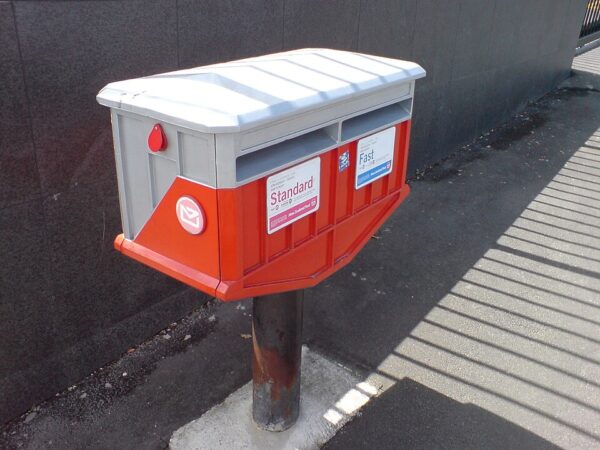 A NZ Post box: you can drop your voting papers into one of these. Image: Wikipedia
A NZ Post box: you can drop your voting papers into one of these. Image: Wikipedia
Jump(er) on your bike to celebrate Te Hā Noa opening
Next Thursday 21 August, there’s a fun group ride in your winter woollies to celebrate the opening of the Victoria St cycleway, a centrepiece of the linear park Te Hā Noa.
The New Zealand Fashion Museum, Bike Auckland and Auckland Council invite you to don your warmest, oldest, boldest, holiest, most fabulous jumper (or cardigan) and jump on your bike for a jumper-themed bike parade down Te Hā Noa.
- 5.30pm – Arrive on your bike via Te Hā Noa – Victoria Street West bike path.
- Assemble at the bike racks by Te Waihorotiu Station on the corner of Victoria Street West and Federal Street for registration.
- 6pm – Parade/ride down Te Hā Noa past the judges at Elliott Street and regroup at the seating area between Elliott and Queen Street for final judging
- 7pm – Park up at the free Bike Auckland Valet Parking in Darby Street and stay on for a hot drink and prizegiving in The Strand Arcade.
The best-dressed riders will win prizes, so get creative and ride with pride!
The parade kicks off at 6pm – don’t miss it! All ages welcome.
And be sure to stick around for the Midtown Street Party in The Strand Arcade, featuring the KNIT exhibition, workshops and a Makers Market.
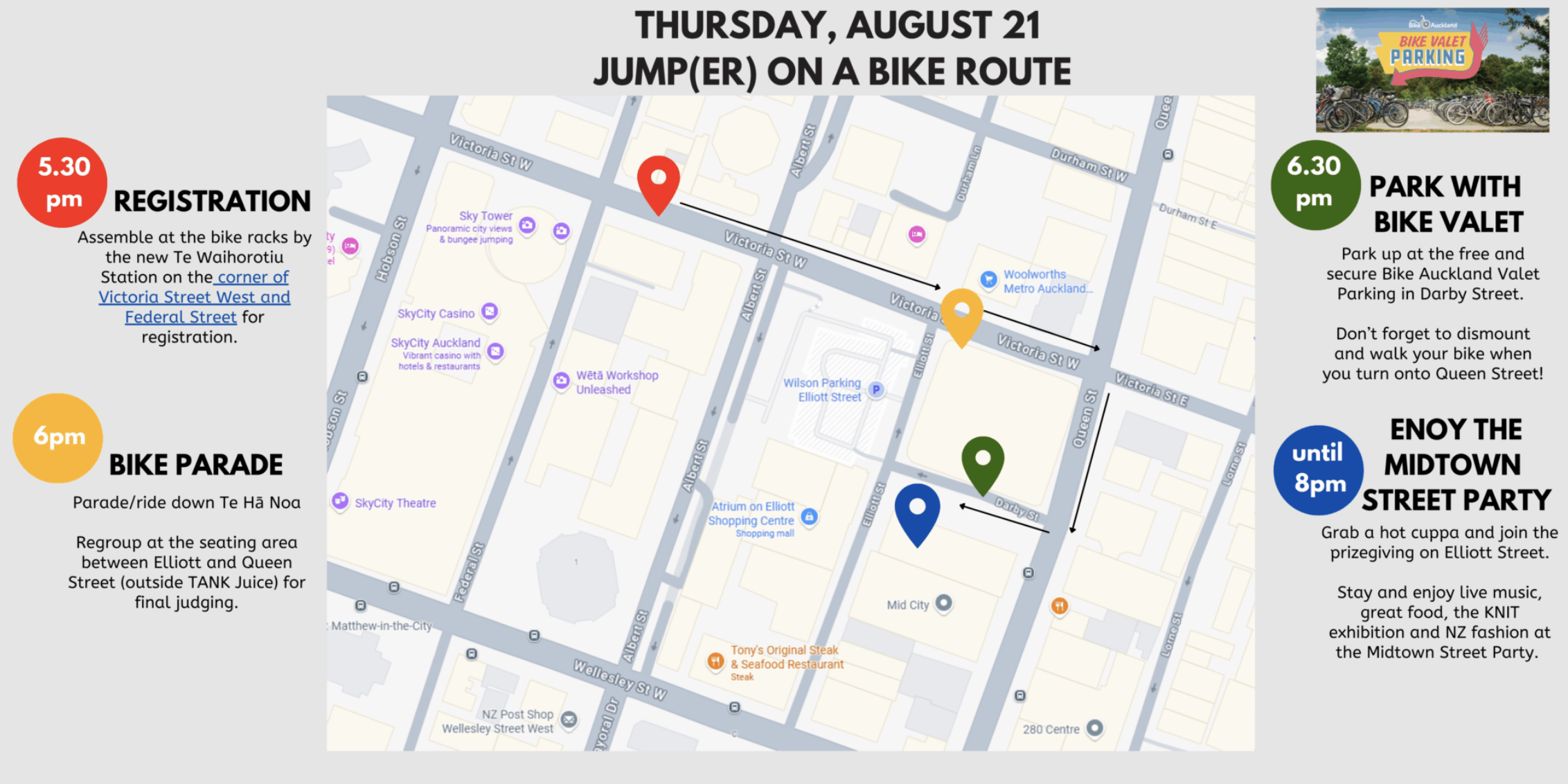 And, thanks to reader George for pointing us to a great series of free Wednesday evening lectures at the University of Auckland’s Te Pare School of Architecture and Planning. Upcoming talks include:
And, thanks to reader George for pointing us to a great series of free Wednesday evening lectures at the University of Auckland’s Te Pare School of Architecture and Planning. Upcoming talks include:
- CJ Lim (Professor of Architecture & Urbanism at the Bartlett Faculty of the Built Environment, University College London), Dream Systems, Not Dream Homes. Wednesday, 20 August 2025, 6:30 pm.
- Natalie Allen (Managing Director, The Urban Advisory), Rethinking Aotearoa’s Housing: Myths, Realities, and the Path Forward. Wednesday, 27 August 2025, 6:30 pm.
- Tim Gittos and Caroline Robertson (Spacecraft Architects), Small Means, Big Impact: Designing for Density, Community and Climate. Wednesday, 10 September 2025, 6:30 pm.
- Sarah Allan (UK Government’s Chief Architect, 2025 University of Auckland Hood Fellow), on the idea of a Government Architect. Wednesday, 17 September 2025, 6:30 pm.
- Shane Brealey, Managing Director (Simplicity Living), Beyond the Build: Rethinking Housing Finance and Long-term Community Investment. Wednesday, 24 September 2025, 6:30 pm.
That’s us for today – ka kite! As always, feel free to share links and stories in the comments.
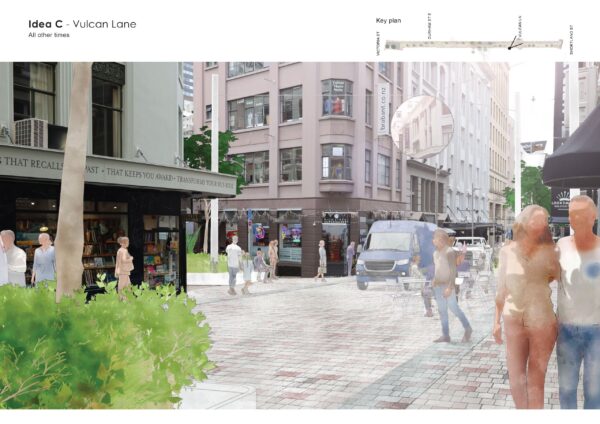
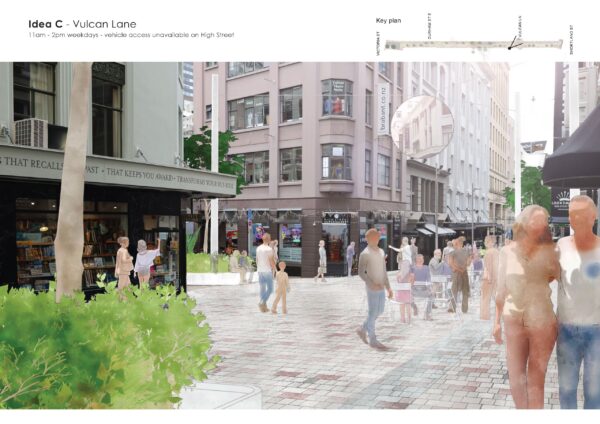
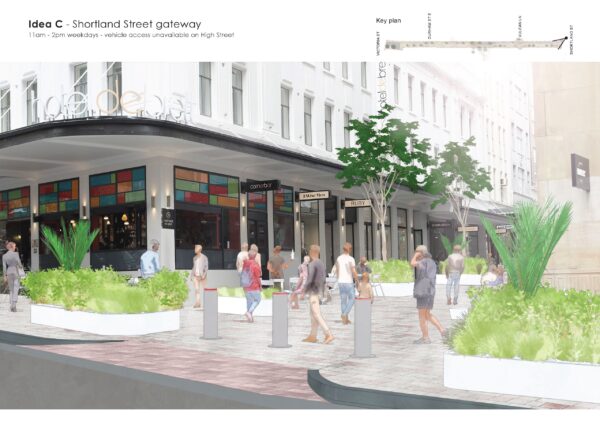

 Processing...
Processing...
Here’s a link for anyone who wants to attend interesting evening talks about architecture and planning at the University of Auckland:
The annual ‘Fast Forward lecture’ series has started. These are great talks, they’re free and they feature great speakers. Have a look at the link below and put the series in your diary.
https://www.auckland.ac.nz/en/engineering/news-and-events/events/fast-forward.html
That Mt Wellington page has dispeared like a brainfart hopefully never to be seen again
No, just remove the full stop at the end of the link:
https://haveyoursay.at.govt.nz/jellicoe-road-mt-wellington-removal-of-clearway-restriction-sign
It is alive and unwell…
🙁
Thanks Heidi
It really was harder than it looks to get the massive pdf files of the TCC Agendas and Minutes into a searchable, secure, robust, online tool, within a bureaucracy focused on bigger projects.
AT must have close to as many TC Resolutions as the rest of the country put together. It is a real achievement to be able to put these into a public, searchable form.
I appreciate the persistent internal advocacy to achieve today’s result.
Also, a simple folder containing each year’s files has been working well for me.
Although it doesn’t enable searching by topic, sometimes the answers you need can be easily found by date.
Thank you for your advocacy, and congratulations on your success getting this directory released. I’ve already enjoyed using it to casually scroll through a few documents, and I can see its immense value as a reference for both public and industry.
“The cost of running a meaningful mayoral campaign is around $500,000, and to stand as a councillor can cost $20,000.”
So much for democracy by the people for the people.
And congratulations to the Ecomatters Bike Hubs that celebrated their 100,000th visitor this week. A great initiative that removes bicycles from the waste stream, receives donated bikes and ensures people can access safe, rode worthy bicycles and provides support and advice on care and maintenance.
On the local elections Shore ward farewells one of it’s G.O.A.T making it very hard for me in terms of number 2 vote at the moment I’m letting the universe decide
Voters in North Shore ward need to ask the candidates to make their policies and intentions clear on transport, environment and housing matters, as well as their understanding of water services and utility reinforcement.
Totally agree.
Maybe ask them about their understanding of the costs and inefficiencies of sprawl, and what they’ll do to prevent it, in the interests of having an affordable and sustainable city.
Thanks for the replies we’ll see in terms of policy though in terms of likely to win candidates I already have a rough of policy but it’s more than that for me.
First Danielle Grant has been the local board for a long time won for the first time on ticket as Richard Hills. When the Nats and the Auckland Future ticket came knocking with money(allegedly) jumped ship to them tried to run for the governing body, lost Richard Hills narrowly beating Daddy Gillon a.k.a Grant Gillon a.k.a lower North Shore’s Mike Lee. She’s still a Nat to this day as far I know ran on John Gillon’s ticket in the last election.
John Gillon part of the Gillon dynasty along with Paula and Daddy rivals the Hartley’s in shore Labour/left politics not really liked by insiders much but the voter’s don’t seem mind. Someone I voted for in the past politicly better than Daddy. Teamed with Danielle Grant last election along with other political opportunism can’t be trusted
You see my problem hopefully
Likely also rans
Helena Roza ACT local enough said
Eric Boon Leong Chuah, I know nothing about this one might surprise me.
Unless things really change I properly won’t be on the Shore in three years I’ll join the rest of my family scattering of across the four corners properly looking at Avondale, New Lynn or Henderson. I accepted I’ve been gentrified out and there’s no future here
Great news if you love berm parking, AT have just answered a question I asked in relation to the new parking bylaw…
TLDR = status quo sadly remains, if no signs, no ticketing.
We’ve now reviewed the details of your case (case number CAS-PL9V1-J3Z4K1)
Prior to the new bylaw, we were unable to enforce parking on the grass berm without a legal resolution that showed where the restriction applied. This had to be consulted on publicly with those that would be effected and then approved by the Traffic Control Committee before we could install the signs. This was due to it conflicting with the wording in the Road User Rule. In areas without a kerb and channel, we would still need to go through this process.
The new bylaw now means that we no longer have to resolve the restriction where there is a kerb and channel, however, we still needs signs showing where the restriction applies in order for us to enforce. This is due to the clause in the Land Transport Rule -Traffic Control Devices 2004 which states that a road controlling authority must install regulatory signage in accordance with 4.2(3) to draw attention to a requirement, restriction, or prohibition on road users when (a) the road controlling authority has made the requirement, restriction, or prohibition by bylaw (or other instrument) on a road under its control.
Thanks for getting in touch
We’ve now closed your case.
The bylaw was never the solution. It was a pretense that they were doing something.
The legal opinion they have implies they cannot make an effective by-law. If AT had any spine, they would prosecute people parking on the been for parking in the footpath. This does not need signage.
There’s plenty of evidence that the berm is part of the footpath.
The problem here is AT’s inaction and messaging over the last 15 years.
The images of a possible future High Street are really great.
I earnestly hope that those planning the construction will use this as an opportunity to show how to build improvements with adjacent businesses in mind. How can we avoid a painful and protracted experience for all? This has to be a sitter for night time works, not moving kerbs (thus avoiding utility shifting), storing equipment and materials off site (avoiding those annoying fenced off areas where no work is happening) outstanding comms and engagement and rewarding the constructors for finishing early. That would really show that Auckland can do this.
Has someone asked Murray Crane his thoughts?
$144M cost announced today for canceling the Hyundai iRex ferries. So better than the full $551 million contract value. Project iReX ballooned from $1.45 billion when approved in 2021 to Treasury warning it was on course to $4 billion in 2023 thanks to eyes-bigger-than-their-mouths ambitions and absentee management.
But will we still save money and get a comparable result once the other ferries are ordered?
Should of built them and then sold them. We would have turned a profit. Now we are up s**T creek with no idea how much they will cost, when they will come (if at all) while blowing a massive amount of money on maintaining the old, worn-out, expensive ships.
Hmm my understanding is that Stena looked at them and decided that no that design makes no sense. When Stena (second largest ferry company in the world) a company with the highest reputation in the industry rejects a good deal you know the design were poor and not very efficient.
This morning I was leaving a school after dropping my youngest to his classroom, just after passing the Lollipop STOP pedestrian crossing, I heard the caretaker of the school shout at a driver “SLOW DOWN MAN”.
This is a school that clearly marks 30kmh, with the time limitations that the useless men in suits in Wellington have made us use. 8.50am, a pedestrian crossing with Lollipops, and children and parents crossing, and yet a driver of a vehicle approaches the crossing above the speed limit.
This is what we are dealing with, not just useless laws, but terrible understanders of the law.
Keep it simple for the idiots that drive cars and do not have children or have forgotten they have children.
MAKE IT 30 everywhere.
bah humbug
Yeah, what’s up with that clearway partial removal along Jellicoe Rd. I guess the in ability to turn right at the big intersection (formally the Panmure roundabout) and Te Horeta Rd as removed a lot of the traffic on that road.
Perhaps cycleway could go along the rail corridor instead? they need the room for 3rd / 4th line I would think though but cycleway could be a temporary thing then shifted to Jellicoe when rail is required.